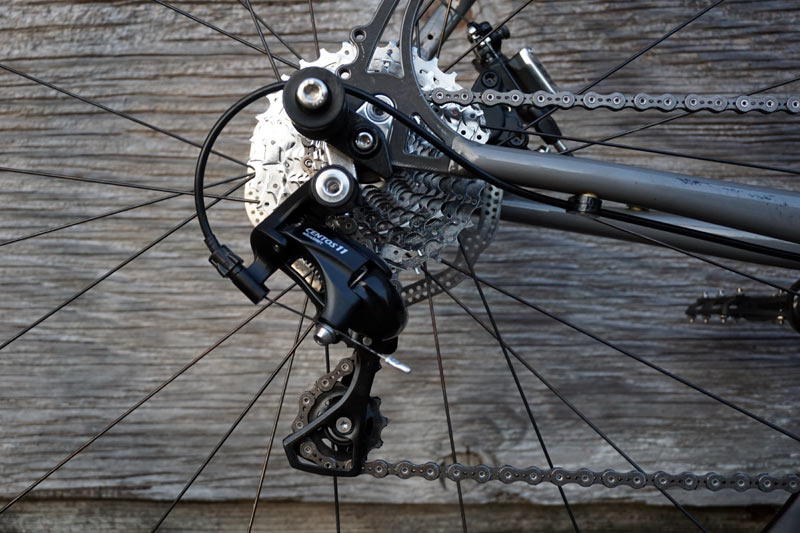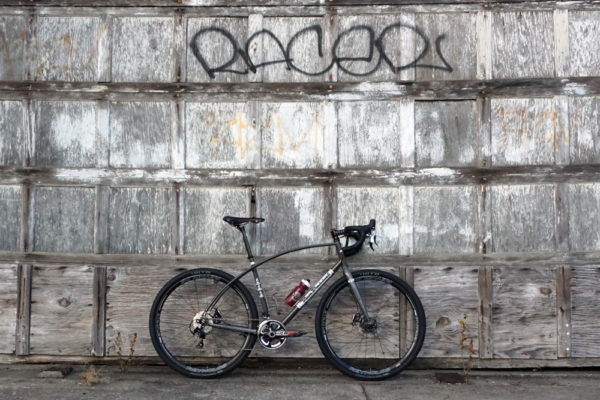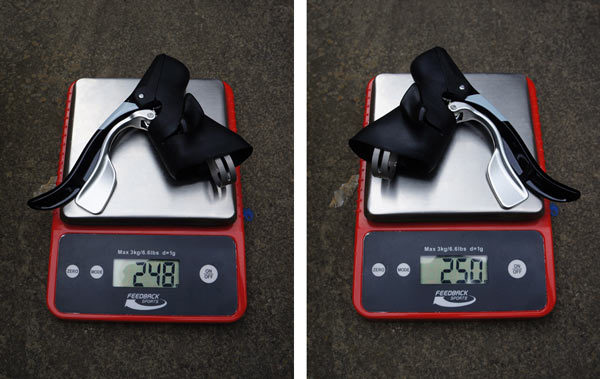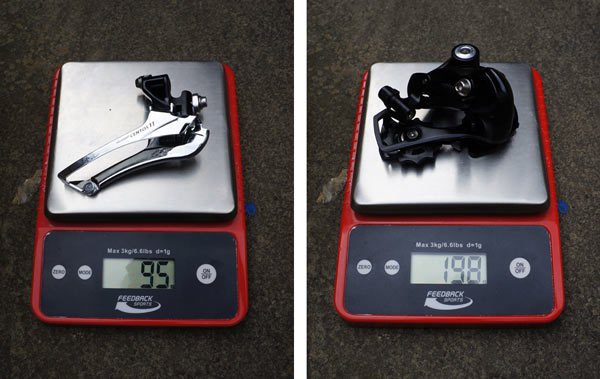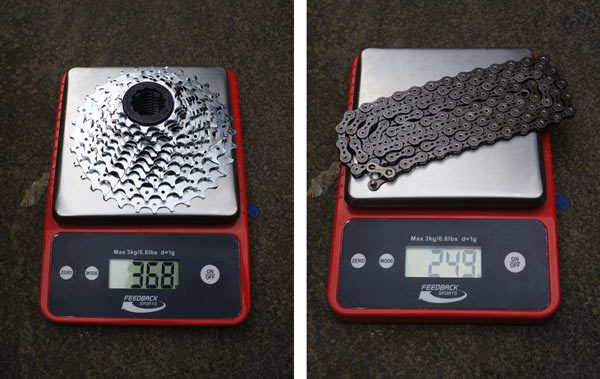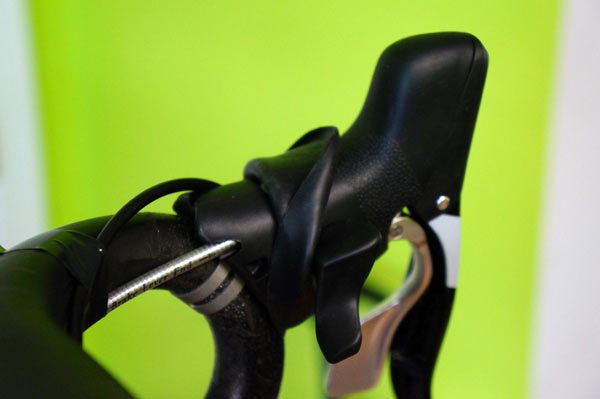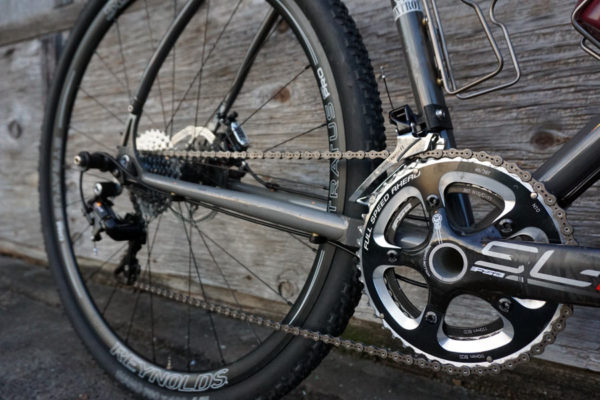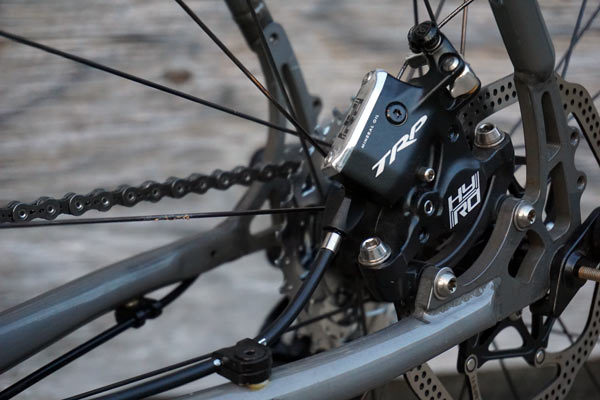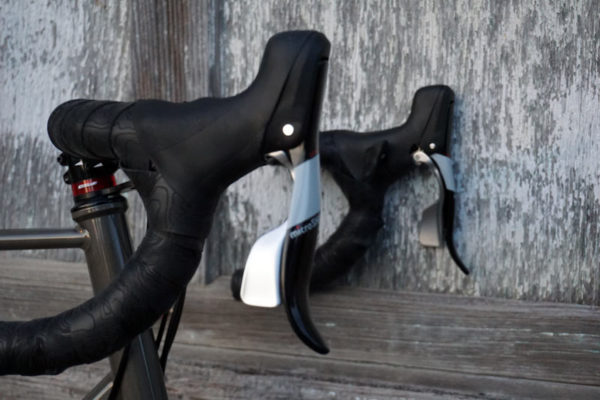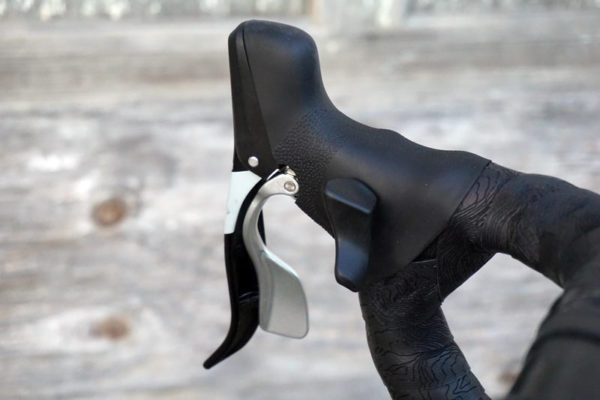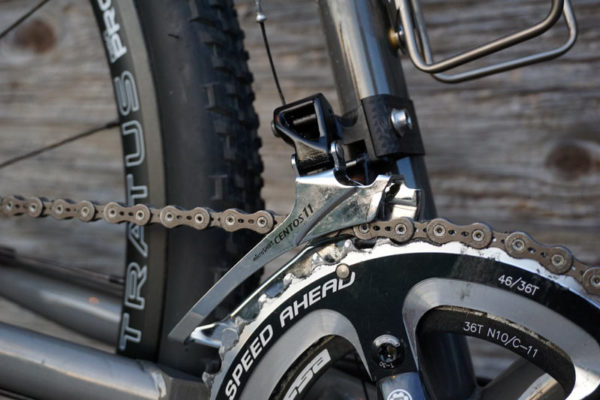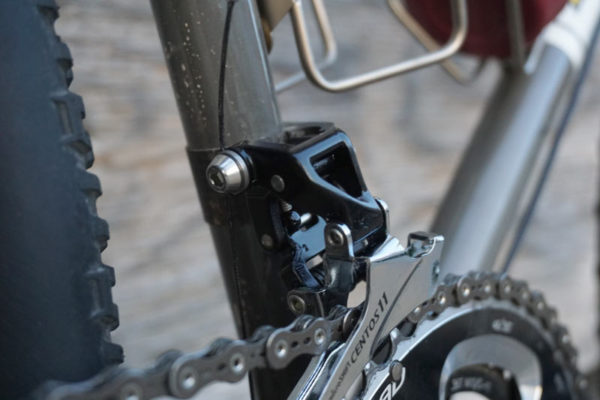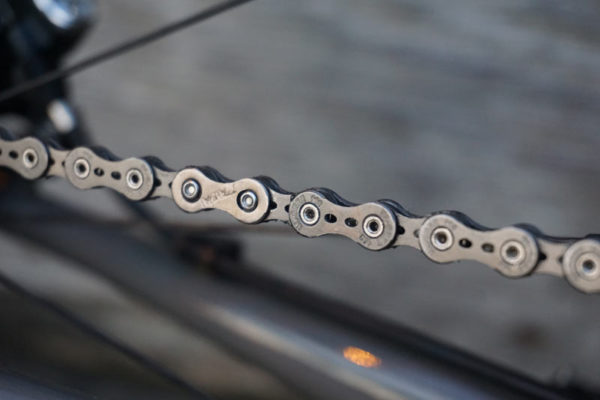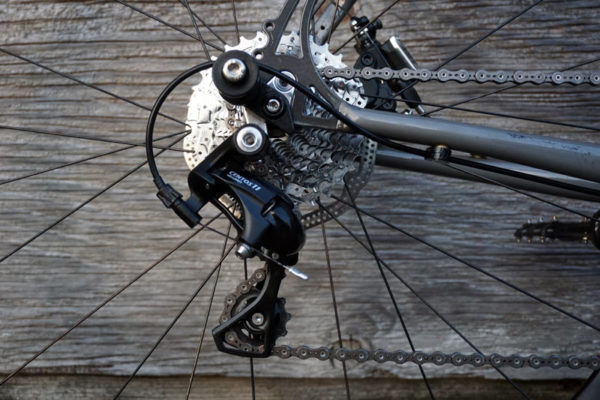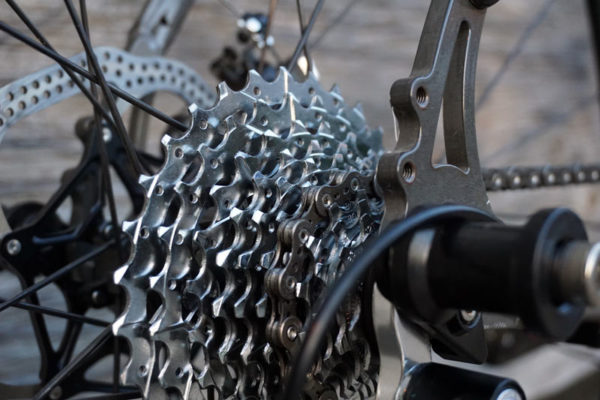It was time to mix up the build on our original World’s Funnest Bike, and Microshift had sent in one of their upper mid level groups for review. I’ve wanted to try a Microshift group for some time because, well, I’ve just wondered how they stacked up against Shimano, SRAM and Campagnolo. And, I mean, honestly, you’ve probably wondered that, too.
The Microshift Centos 11 is billed as sitting between Shimano 105 and Ultegra, with the Arsis 11 group sitting above it as their Ultegra/Dura-Ace competitor. They don’t make cranksets or brakes, so we received the shifter levers, derailleurs and cassette to test, along with one of Taya’s best chains. Here’s how it came together on the Van Dessel WTF…
MICROSHIFT CENTOS 11 ACTUAL WEIGHTS & INSTALL NOTES
Shifter levers come in at 248g and 250g each. These and the other parts are all supposedly Shimano compatible with 9000/6800/5800 groups. The derailleurs and brake levers also come in white, and they have compatible flat bar and TT bar-end shifters available, too.
Front derailleur is 95g and rear is 198g.
The cassette is 368g for an 11-32. They also offer an 11-25 and 11-28 option. I chose the widest range cassette because it’s going on my “fun” bike that’s used for a little bit of everything. Here’s how that compares:
| Microshift Centos 11 | Shimano 105 5800 | |
| Front Der. | 95g | 90g |
| Rear Der. | 198g | 228g |
| Shifters | 498g | 500g |
| Cassette (11-28) | 311g (claimed) | 277g (actual) |
| TOTAL | 1,102g | 1,095g |
| DIFFERENCE | +7g | — |
The Taya ONZE-115 UL chain comes in at 249g with 116 links, including quick link.
Installation is straightforward, as easy if not a bit easier than setting up any other mechanical group. The only issue I had was with the shift cable housing’s exit ports. If you were running it straight out, there’d be a little bit less of an issue, but I wanted to use the diagonal groove to run that cable alongside the brake cable under the tape. Both require a tight bend to put it flat against the bar, the diagonal option more so. Electrical tape helped hold it down while I wrapped the bar, and the bar tape did the rest to get it all laying tight against the handlebar. I thought that bend radius might lead to cable friction, but shifting is smooth and light.
Only other thing worth mentioning is that it’s a bit tough to get to the clamp bolt that secures the lever body to the handlebar. And you might need to get a flashlight to find the right click placement to start feeding the shift cable in, but once it’s in, set up is easy. The brake cable almost guided itself into the hole, putting a smile on my face.
For the rest of the build, I kept the FSA SL-K cranks from the original WFB project…
…along with the TRP HyRD brakes for now, but these will probably get swapped out soon to review different calipers. Microshift’s cable pull works very well with these calipers, offering plenty of power and easy setup.
So, the big question is, why would you want to stray from the big three drivetrain brands? This group with all parts shown here retails for about $320USD. That’s close to or just under MSRP for the same parts collection from Shimano 105 and Campagnolo Centaur. If not price, it’s got to come down to the details…
MICROSHIFT CENTOS 11 FIRST IMPRESSIONS
Microshift’s cold forged aluminum levers use a familiar flared brake lever to make them easy to reach in any hand position. The hoods are similarly shaped to other brands, with girth somewhere between SRAM and Shimano mechanical levers. The shift lever positions mimic Campagnolo’s, but the thumb lever is differentiated with an additional section that makes it useable when in the drops.
The shift paddle and thumb lever are both oversized compared to competitors’ levers. Folks with smaller hands or limited reach might like this. They offer tooled brake lever reach adjust.
It’s equally accessible in both hand positions – advantageous if you’re in a sprint and need to shift to a harder gear.
There’s a lot of lever throw to initiate a rear downshift (easier). At first, I thought this might be where Microshift saved dollars, but I went back to feel Campy and Shimano levers and they have similar “dead stroke” before starting to pull cable. Only SRAM, with its single lever design, has immediate action. You can get four downshifts from a full lever throw, but that ends up putting the lever at almost 90º from its starting position, which isn’t the most ergonomically easy feat. Upshifts with the thumb lever are single click affairs.
Since the parts didn’t come with any cables preinstalled, I reused the cables and housing from the original build to speed up installation. The front derailleur mounted cleanly to the carbon Parlee FD clamp, and cable routing under the bolt kept a straight path. Everything worked smoothly after minimal limit screw adjustment.
A big part of shifting performance is the chain, and the Taya 115 UL impressed me. It’s ultra quiet, shifted very, very fast, and it’s got their ultra hard coating and anti-rust treatment. Plus, with all of the links (inner and outer) cut out and the pins hollowed, it’s light and looks bad ass. The gray finish matches the bike perfectly. Together, front shifting is flawless, fast and smooth, even under pressure.
The rear derailleur mimics Shimano’s design in that it puts the cable bolt out in front of the parallelogram pivot point. This creates more leverage, which means easier shifts. This requires more cable pull, which is perhaps why the lever throws so far to get four full shifts, but it feels very light and smooth. This is made more interesting because the front derailleur’s “lever” is so short behind it’s pivot, especially compared to current Shimano and Campy designs.
It didn’t take much fiddling to get things lined up and shifting accurately, either. All of the critical parts are aluminum, and it feels very solid.
Gear steps on the 11-32 are 11/12/13/14/15/17/19/21/24/28/32. Most of the cogs are drilled out to save grams. So far, it’s performing as a cassette should, really nothing to report other than it works, runs quiet and shifts well.
First impressions are good. I’d put its performance and feel on par with similarly priced groups from the big three, which you could interpret as saying a lot, but Microshift has been making drivetrains for a long, long time. So, really, it shouldn’t come as a surprise. Without a massive weight or price argument in its favor, it may just come down to wanting to put something different on your bike. Stay tuned for a long term review later this year.
